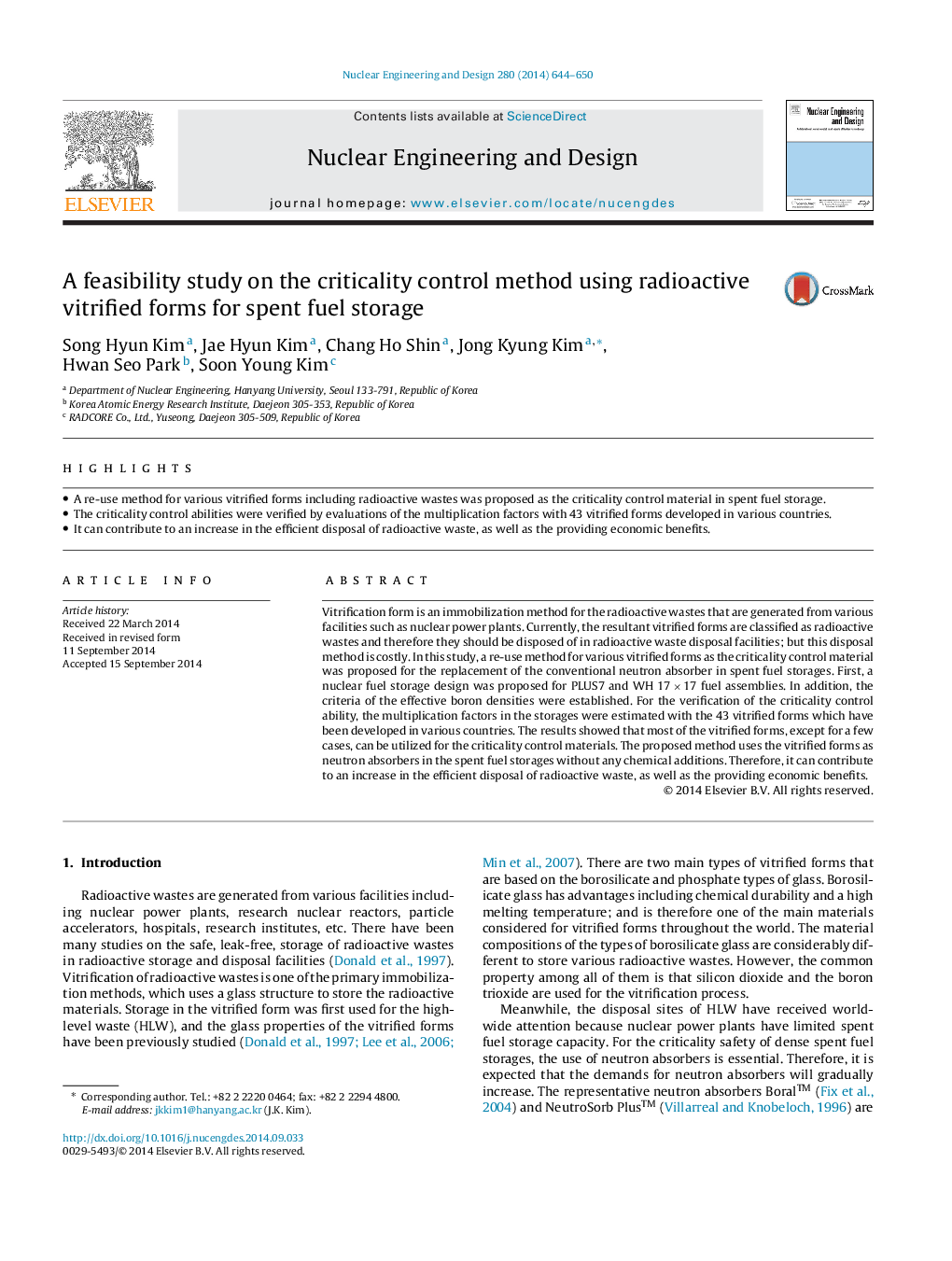| Article ID | Journal | Published Year | Pages | File Type |
|---|---|---|---|---|
| 296288 | Nuclear Engineering and Design | 2014 | 7 Pages |
•A re-use method for various vitrified forms including radioactive wastes was proposed as the criticality control material in spent fuel storage.•The criticality control abilities were verified by evaluations of the multiplication factors with 43 vitrified forms developed in various countries.•It can contribute to an increase in the efficient disposal of radioactive waste, as well as the providing economic benefits.
Vitrification form is an immobilization method for the radioactive wastes that are generated from various facilities such as nuclear power plants. Currently, the resultant vitrified forms are classified as radioactive wastes and therefore they should be disposed of in radioactive waste disposal facilities; but this disposal method is costly. In this study, a re-use method for various vitrified forms as the criticality control material was proposed for the replacement of the conventional neutron absorber in spent fuel storages. First, a nuclear fuel storage design was proposed for PLUS7 and WH 17 × 17 fuel assemblies. In addition, the criteria of the effective boron densities were established. For the verification of the criticality control ability, the multiplication factors in the storages were estimated with the 43 vitrified forms which have been developed in various countries. The results showed that most of the vitrified forms, except for a few cases, can be utilized for the criticality control materials. The proposed method uses the vitrified forms as neutron absorbers in the spent fuel storages without any chemical additions. Therefore, it can contribute to an increase in the efficient disposal of radioactive waste, as well as the providing economic benefits.
